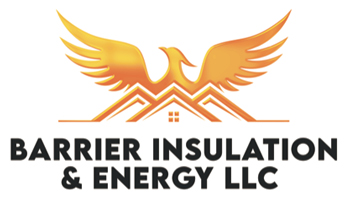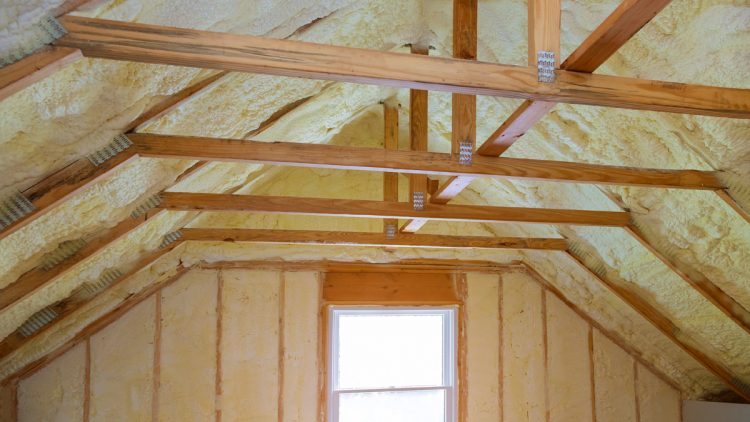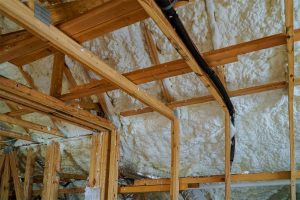Spray Foam Insulation Vs Blown In
Insulation is crucial for a home’s energy efficiency and comfort levels. However, many homes do not feature sufficient insulation due to worn and outdated materials. Two popular insulation types are spray foam and blown in. So, which insulation material is best? Let’s compare the two types!
Spray Foam Insulation
Spray foam insulation is sprayed on wet and it expands rapidly into gaps, cracks, and solidifies as a hard, thick foam. This insulation type can be used to insulate the walls of new build and existing homes. One of the best features of spray foam insulation is how well it conforms automatically to all of the odd shaped cavities and air leaks.
The R-value of spray foam depends on the chemical makeup as there are two variants, closed and open cell spray foam insulation. Spray foam insulation does require a slightly greater investment, but it does offer superior performance.
Blown In Insulation
Blown in insulation is constructed of either fiberglass or cellulose that is blown into cavities in walls. This material is used to fill gaps in the insulation. Blown in insulation is ideal for attic spaces filled with nooks and crannies that are difficult to navigate through.
Cellulose blown in insulation is the most affordable option for home and business owners because it is made of recycled materials. Once it is installed, this insulation can last up to 25 years with very reliable performance overall.
Pros & Cons Of Spray Foam Insulation
Spray foam insulation is unique in that not only does it act as an insulation barrier, but expands into tiny gaps and cracks. This seals off many of your home’s air leaks, to keep you cooler in summer and warmer in winter. Open cell spray foam expands to an incredible 100 times its original volume in just seconds.
The primary components of spray foam are an organic chemical compound made from petroleum extracts and water. It is mixed and blown onto the inner wall and attic surfaces to seal the home and insulate it.
Pros Of Spray Foam:
These are just a few of the pros for spray foam insulation.
- Rated for fire safety for walls and attics.
- It’s an environmentally safe insulation.
- Spray foam doesn’t attract insects or pests.
- Will not retain water from roof leaks.
- Helps create a semi conditioned space in attic.
- Seals off air leaks to help reduce energy bills.
Cons Of Spray Foam:
Spray foam insulation does cost more than traditional insulation up front, yet it is a more effective insulation option. Over time the difference will get paid back with superior performance.
- Spray foam costs more up front.
- Spray foam must be installed by a pro.
- Some brands might have an odor for a short time.
Pros & Cons Of Blown In Insulation
Blown in insulation is great at keeping warm air from escaping the home or building during wintertime. This insulation also prevents any heat from entering inside during the hot summers.
Here is a list of a few benefits and drawbacks to installing blown in insulation:
Pros Of Blown In Insulation:
- Retains warm air in the winter.
- Fiberglass materials are completely fireproof.
- Ease of installation.
- Cellulose and fiberglass will soundproof your attic.
Cons Of Blown In Insulation:
- Too much insulation can cause ceilings to sag.
- Can succumb to mold.
- Will require professional installation.
How Much Does Spray Foam Insulation Cost?
The cost of spray foam insulation installation will also vary depending on if you’re planning to do your whole home, or just certain areas like the attic, exterior walls, or crawl space. According to improvenet.com the average installation cost for spray foam insulation in the United States is $2,000. *These are not our actual costs. Contact Barrier Insulation to get an actual quote today.
This cost includes many new build homes that don’t require insulation removal or any demolition to install new insulation. For older homes that want to remove old insulation and install new spray foam insulation in the whole home, attic, walls, or crawl space the costs are higher.
How Much Does Blown In Insulation Cost?
Blow-in insulation (also known as loose-fill) costs between $1 to $1.50 per sq. ft. So, you can expect pay a little more for projects that require higher R valued insulation. Don’t forget when installing this type of insulation around any electrical wiring can be dangerous and may require you to hire a professional installer.
The average price of insulation services ranges anywhere from $40-70 per hour. It can be a lot more expensive to install insulation in older homes instead of a newer home. Bear in mind, the thicker the insulation, the longer its installation will take.
Blown In Vs Spray Foam Insulation
Both blown in and spray foam insulation offer many benefits. Most home and business owners will choose an insulation type based on three factors: price, longevity and versatility. Most individuals decide on blown in insulation due to its low cost and long lifespan. Spray foam, meanwhile, is a popular choice for anyone looking for an environmentally-friendly option. Contact Barrier Insulation & Energy LLC today for more information!
Schedule Your Insulation Services Today!
Whether you are building a new house, or just need to remove the old insulation and install a newer more energy efficient option Barrier Insulation is Phoenix’s first choice in home and commercial insulation. We proudly provide the valley’s more comprehensive insulation service that helps you stay more comfortable and save on energy. Click here to schedule on our website, or just give us a call at 602-499-2922.


